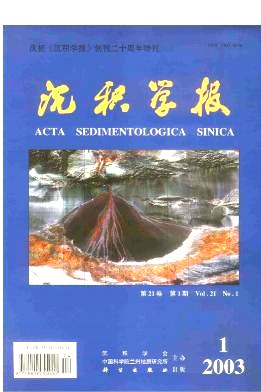HTML
| [1] | [1]Owens P N, Walling D E, Leeks G J L. Tracing fluvial suspended sediment sources in the catchment of the River Tweed, Scotland, using composite fingerprints and a numerical mixing model[A]. In: Foster I D L, ed. Tracers i n Geomorphology[C].Wiley, New York, 2000. 291~308 [2]Ashworth P J, Ferguson R I. Size selective entrainment of bed load in g ravel bed streams[J]. Water Resources Research, 1989, 25: 627~635 [3]Chamley H. Clay sedimentology[M]. Springer, Berlin, 1989, 623. [4]Maldonado A, Stanley D J. Clay mineral patterns as influenced by deposi tional processes in the southeastern Levantine Sea[J]. Sedimentology, 1989, 28 : 21~32 [5]Madsen O S. Transport determination by tracer. A: Tracer theory[A]. I n: Seymour R J, ed. Nearshore Sediment Transport[C]. Plenum Press, New York, 1 989. 103~114 [6]Ciavola P, Taborda R, Ferreira O, et al. Field observations of san d-mixing depth on steep beaches[J]. Marine Geology, 1997, 141: 147~156 [7]Wright P, Cross J S, Webber N B. Shingle tracing by a new technique[R ]. Proceedings of the 16th Coastal Engineering Conference, ASCE, New York, 1978 . 1705~1714 [8]Komar P D. Beach Processes and Sedimentation[M]. Prentice-Hall, Engl ewood Cliffs (New Jersey), 1976.429 [9]Heathershaw A D. Comparisons of measured and predicted sediment transpo rt rates in tidal currents[J]. Marine Geology, 1981, 42: 75~104 [10]Meade R H. Landward transport of bottom sediments in estuaries of the Atlant ic Coastal Plain[J]. Journal of Sedimentary Petrology, 1969, 39: 222~234 [11]Murray J W. Biogenic indicators of suspended sediment transport in marginal marine environments: quantitative examples from SW Britain[J]. Journal of th e Geological Society (London), 1987, 144: 127~133 [12]Gao S, Collins M. Modelling exchange of natural trace sediments between an estuary and adjacent continental shelf[J]. Journal of Sedimentary Petrology, 1 992, 62: 35~40 [13]Gao S, Collins M. Net transport direction of sands in a tidal inlet, using f oraminiferal tests as natural tracers[J]. Estuarine, Coastal and Shelf Science , 1995, 40: 681~697 [14]White T E. Status of measurement techniques for coastal sediment transport[ J]. Coastal Engineering, 1998, 35: 17~45 [15]Gao S. A theoretical framework of tracer methods for marine sediment dynamic s[J]. Chinese Science Bulletin, 2000, 45: 1434~1440 |






 DownLoad:
DownLoad: